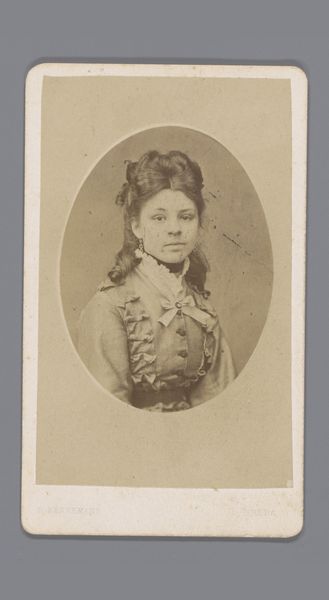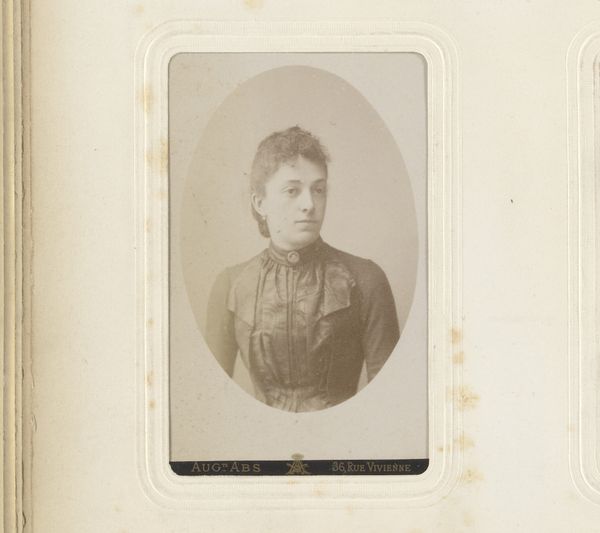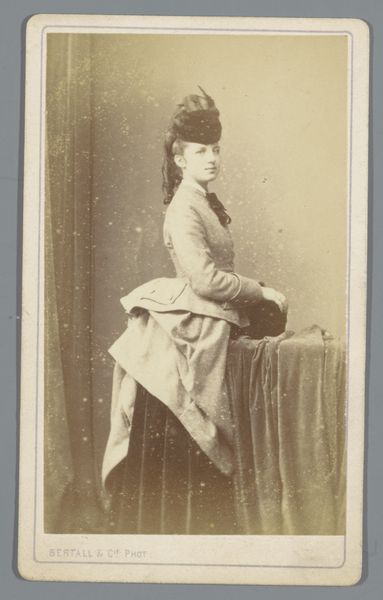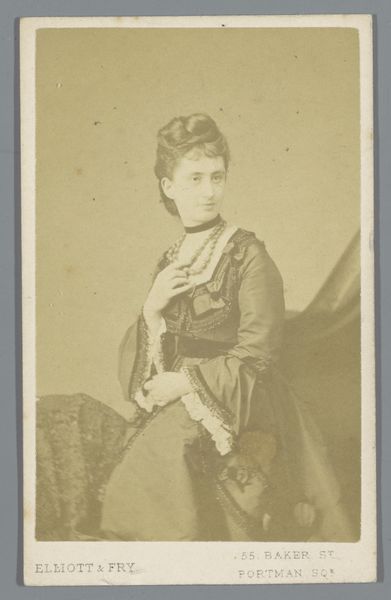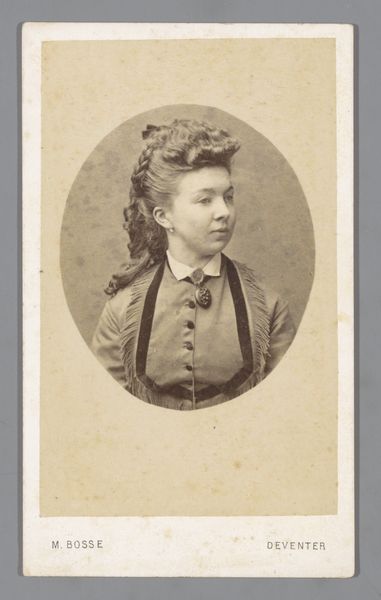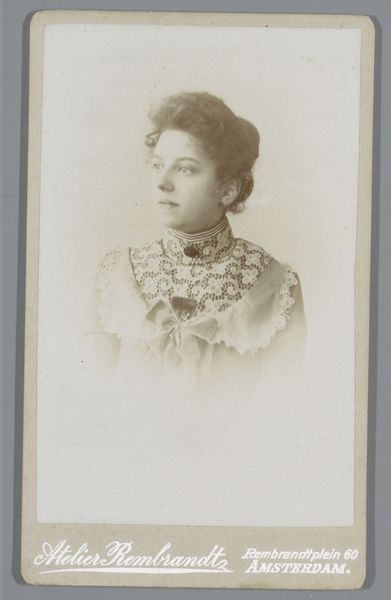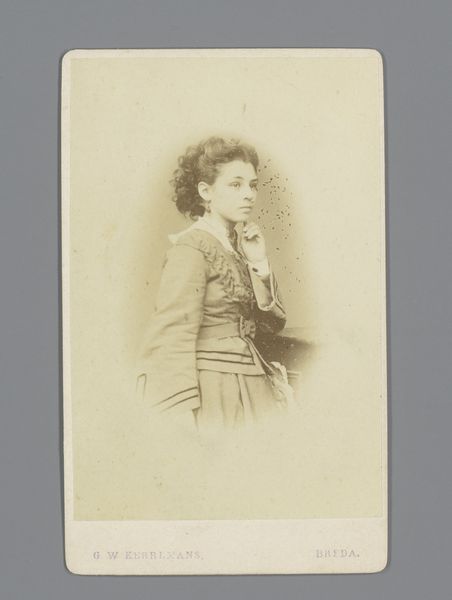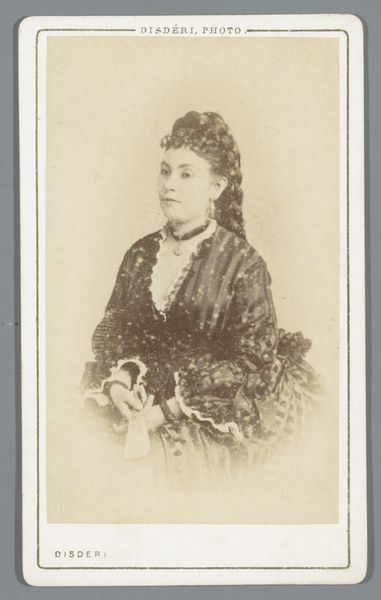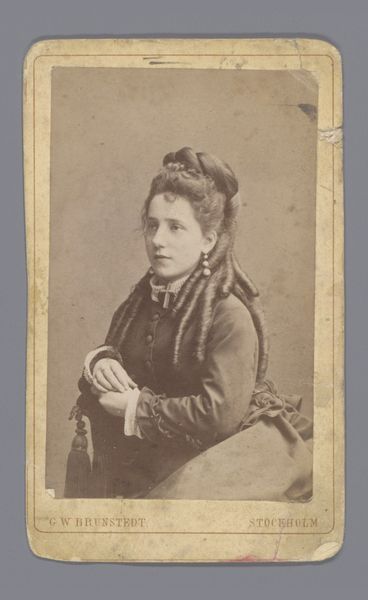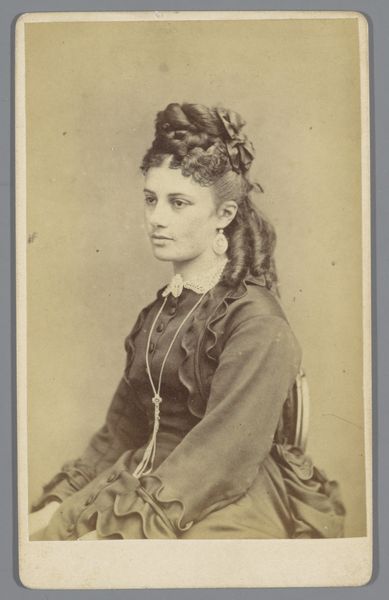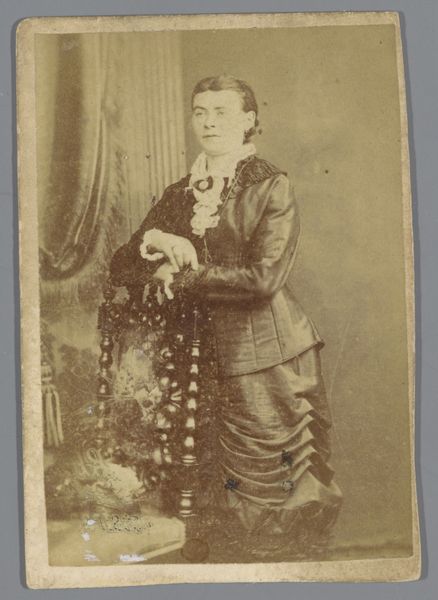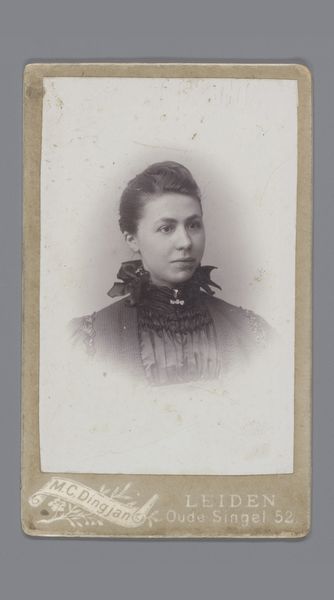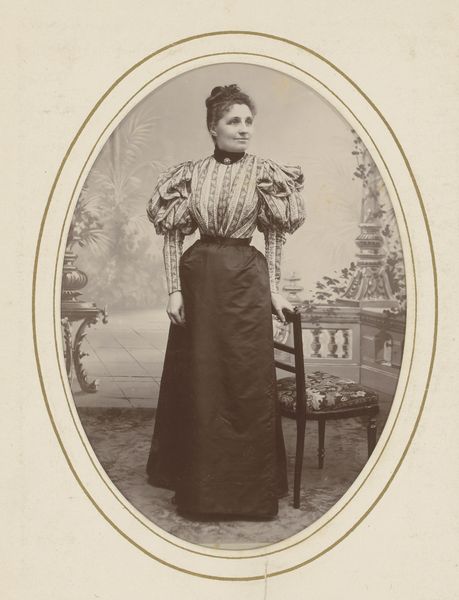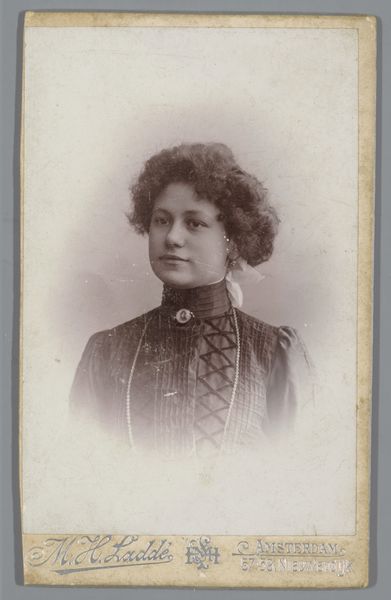
photography
#
portrait
#
photography
Dimensions: height 105 mm, width 63 mm
Copyright: Rijks Museum: Open Domain
Editor: Here we have a portrait photograph, entitled "Portret van een onbekende vrouw," possibly from 1874, by Gerardus Wilhelmus Kerremans. I’m struck by the woman’s reserved expression. What stories do you think this image whispers about women of that era? Curator: Indeed. Her reserved gaze and the overall aesthetic point toward a pivotal moment for women, especially concerning representation and agency. Photography, relatively new, offered a space—though still constrained—for women to craft their own image. How much control do you think she had over her depiction? Editor: That's an interesting question! It's hard to say. Perhaps some, but likely filtered through societal expectations and the photographer’s vision? Curator: Precisely. Her dress, the elaborate hairstyle – they all signify status, yet also constraints. Consider the burgeoning feminist movements of the time. Could this portrait, in its subtle way, be read as a statement? Or perhaps even a negotiation of power, where she is presenting herself according to what is acceptable yet hinting at individual identity? How can we apply feminist theories to further our understanding? Editor: Applying feminist theories helps unpack this performance of identity. It's clear that this portrait speaks volumes about the role of women. Her attire isn't merely decorative; it also symbolizes restrictions. Curator: Yes. The visual language employed serves to either reinforce norms or resist. It urges us to ask what power dynamics were at play. What does it mean for us, now, to gaze back at her across the years, with our own historically informed gaze? Editor: I hadn’t thought about it in that context. Viewing art through an intersectional lens makes it so much more enriching and socially relevant. Curator: Exactly! Hopefully, the piece may act as an active dialogue across eras, identities, and politics!
Comments
No comments
Be the first to comment and join the conversation on the ultimate creative platform.
